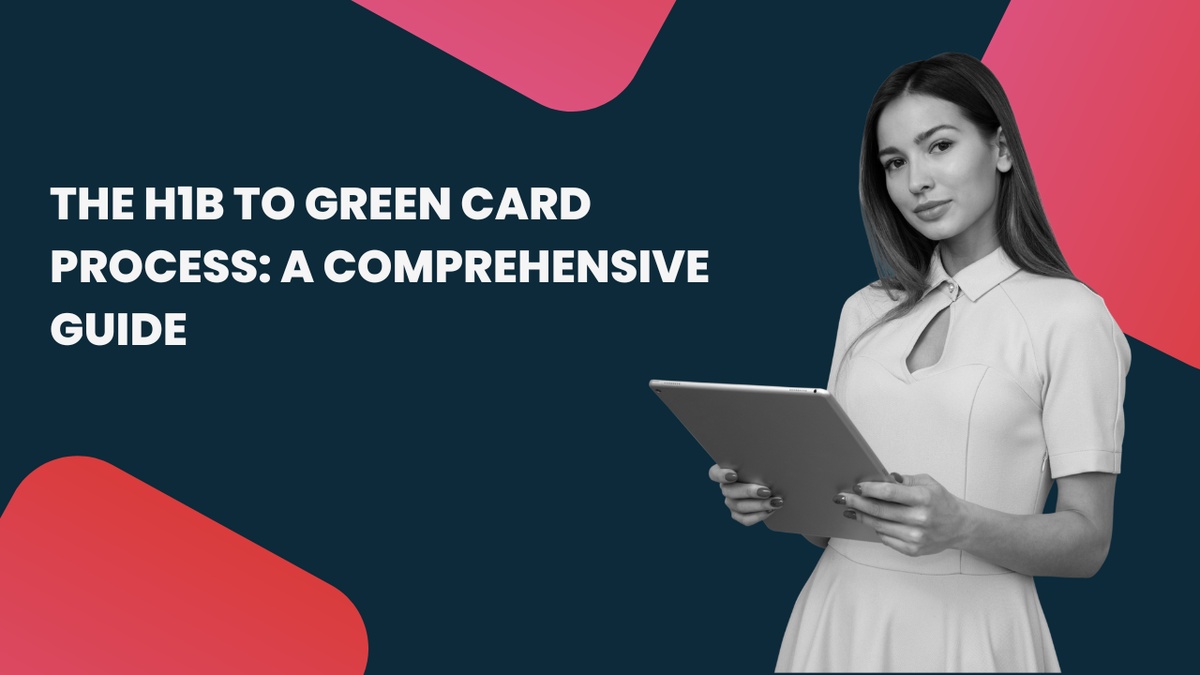If you're an H1B visa holder in the United States, you may be considering the path to permanent residency, also known as obtaining a green card. The transition from an H1B visa to a green card can be complex, but understanding the process can help you navigate it successfully. In this guide, we'll walk you through the steps involved in the H1B to green card process, from eligibility requirements to the application process.
Understanding the H1B Visa
The H1B visa is a non-immigrant visa that allows U.S. companies to employ foreign workers in specialty occupations that require theoretical or technical expertise. To qualify for an H1B visa, you must have a job offer from a U.S. employer and meet the educational and professional requirements for the position.
Eligibility for a Green Card
To apply for a green card, you must meet certain eligibility criteria. One common path for H1B visa holders is through employment-based immigration, specifically through the EB-2 or EB-3 visa categories. The EB-2 category is for individuals with advanced degrees or exceptional ability, while the EB-3 category is for skilled workers, professionals, and other workers.
Steps in the H1B to Green Card Process
1. PERM Labor Certification
Before you can apply for a green card, your employer must obtain a Permanent Labor Certification (PERM) from the U.S. Department of Labor. This process involves proving that there are no qualified U.S. workers available for the position and that hiring a foreign worker will not adversely affect the wages and working conditions of U.S. workers.
2. Form I-140, Immigrant Petition for Alien Worker
Once the PERM Labor Certification is approved, your employer can file Form I-140, Immigrant Petition for Alien Worker, with U.S. Citizenship and Immigration Services (USCIS). This form establishes that you meet the requirements for the green card category for which you are applying.
3. Adjustment of Status or Consular Processing
After USCIS approves your Form I-140, you can apply for a green card through either adjustment of status or consular processing. Adjustment of status is the process of applying for a green card while you are in the United States, while consular processing is the process of applying for a green card at a U.S. consulate or embassy abroad.
4. Form I-485, Application to Register Permanent Residence or Adjust Status
If you are applying for a green card through adjustment of status, you will need to file Form I-485, Application to Register Permanent Residence or Adjust Status, with USCIS. This form is used to apply for a green card and to adjust your status to that of a lawful permanent resident.
5. Green Card Interview
As part of the green card application process, you may be required to attend an interview with USCIS. During the interview, a USCIS officer will review your application and ask you questions about your eligibility for a green card.
Conclusion
Obtaining a green card through the H1B visa process can be a complex and lengthy process, but with careful planning and preparation, it is possible to navigate successfully. By understanding the steps involved and meeting the eligibility criteria, you can increase your chances of obtaining permanent residency in the United States.
Q1: Can I apply for a green card while on an H1B visa?
A1: Yes, you can apply for a green card while on an H1B visa. The process involves obtaining a Permanent Labor Certification (PERM) from the U.S. Department of Labor and then filing Form I-140, Immigrant Petition for Alien Worker, with U.S. Citizenship and Immigration Services (USCIS).
Q2: How long does it take to get a green card through the H1B to green card process?
A2: The processing time for obtaining a green card through the H1B to green card process can vary depending on various factors, including your country of origin and the category of green card for which you are applying. Generally, the process can take several months to several years.
Q3: Can my family members also apply for green cards?
A3: Yes, your spouse and unmarried children under the age of 21 may be eligible to apply for green cards as your dependents. They can apply either concurrently with your application or after you have obtained your green card.
Q4: Do I need to have a job offer to apply for a green card?
A4: Yes, you generally need to have a job offer from a U.S. employer to apply for a green card through the employment-based immigration process. The employer will also need to sponsor your green card application.
Q5: Can I travel outside the U.S. while my green card application is pending?
A5: If you have a valid H1B visa and have filed Form I-485, Application to Register Permanent Residence or Adjust Status, you can generally travel outside the U.S. and re-enter using your H1B visa while your green card application is pending. However, you should consult with an immigration attorney before making any travel plans.
Q6: What happens if my H1B visa expires while my green card application is pending?
A6: If your H1B visa expires while your green card application is pending, you may be able to continue working in the U.S. if you have filed Form I-485 and your application is still pending. This is known as "H1B visa extension beyond 6 years" or "H1B transfer after 6 years."
These FAQs should provide you with a better understanding of the H1B to Green Card process. If you have any specific questions or concerns, it's always advisable to consult with an immigration attorney for personalized advice.


No comments yet